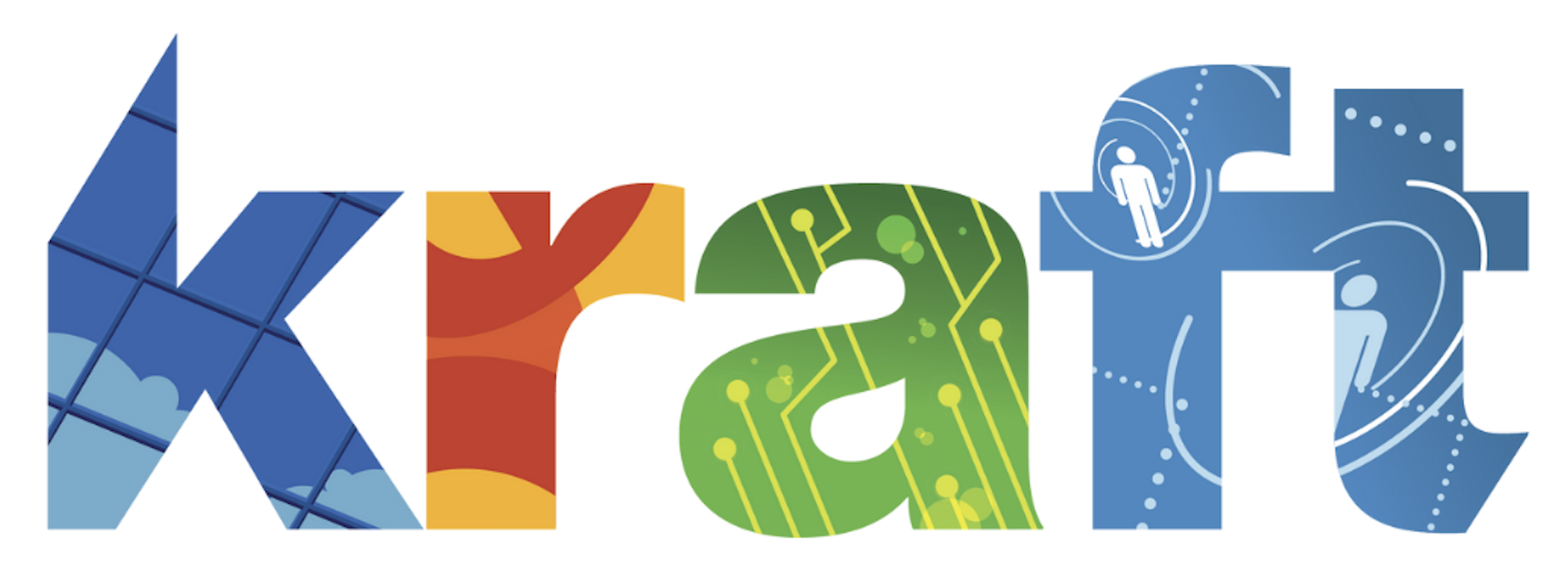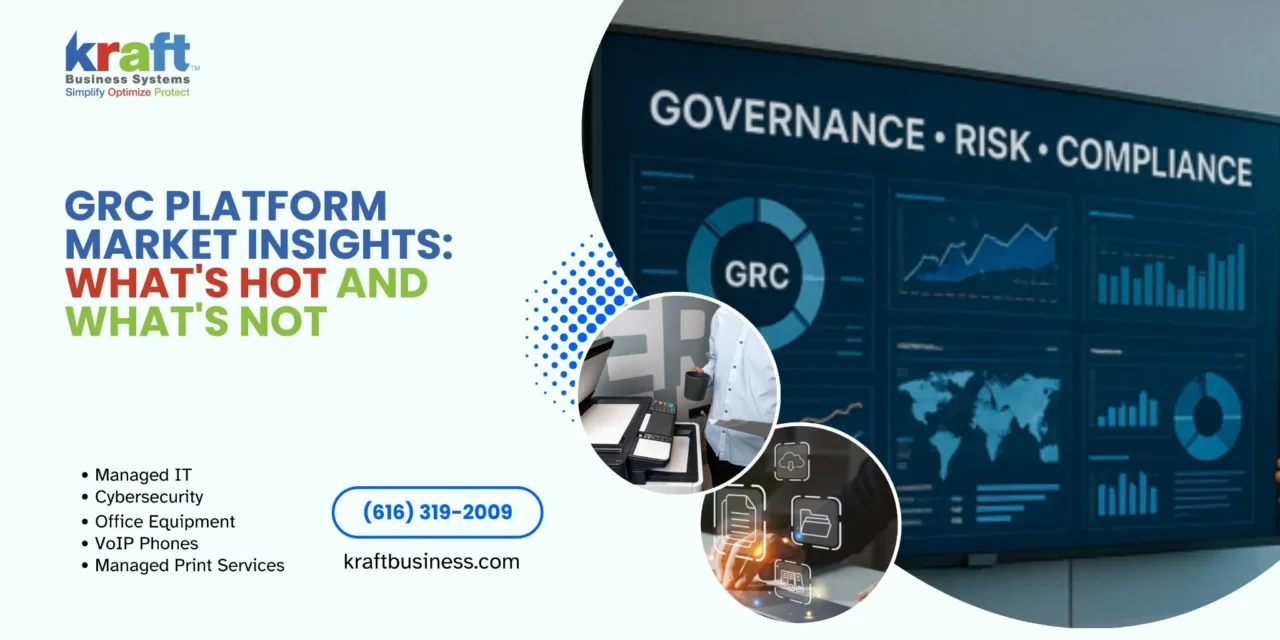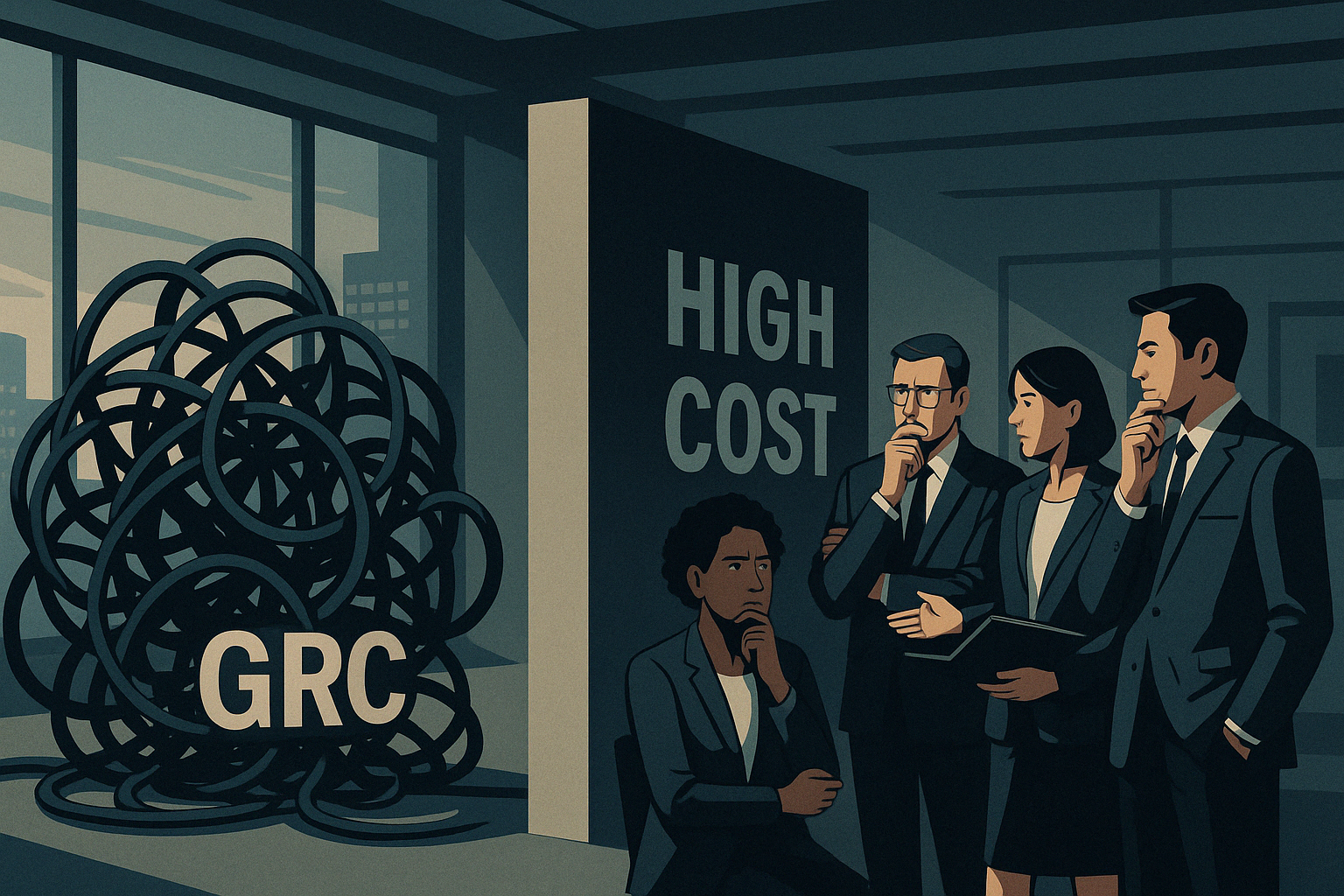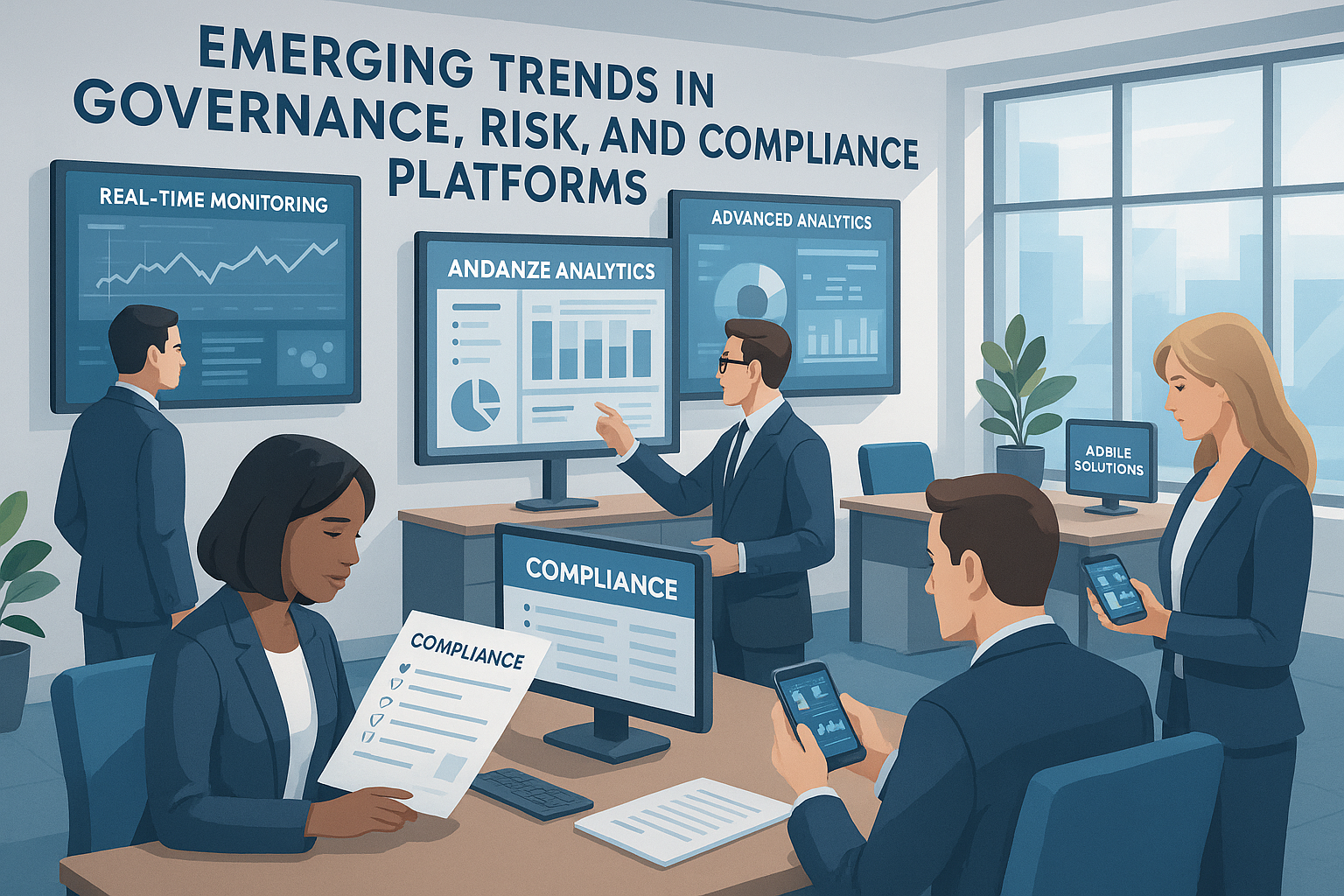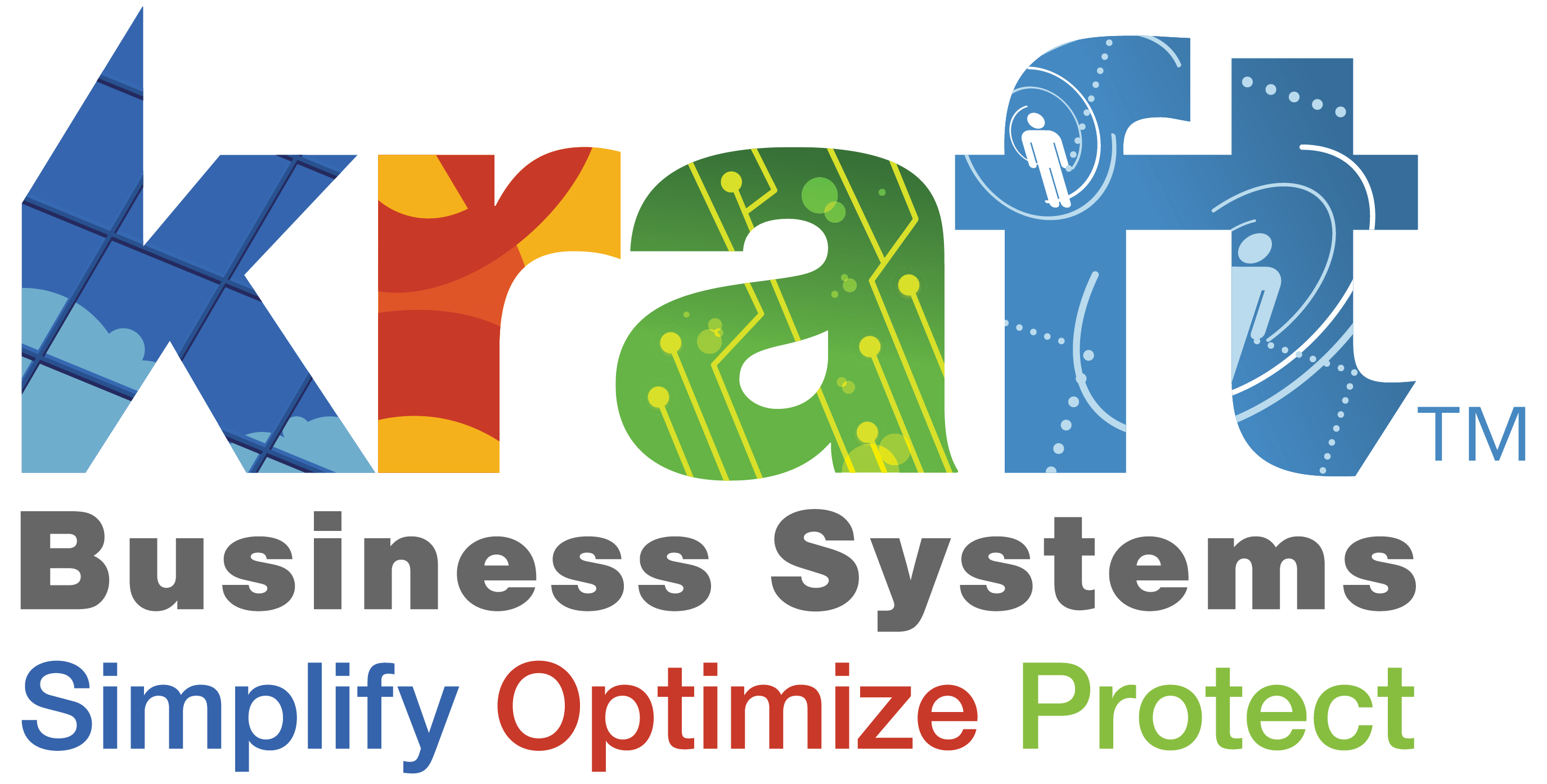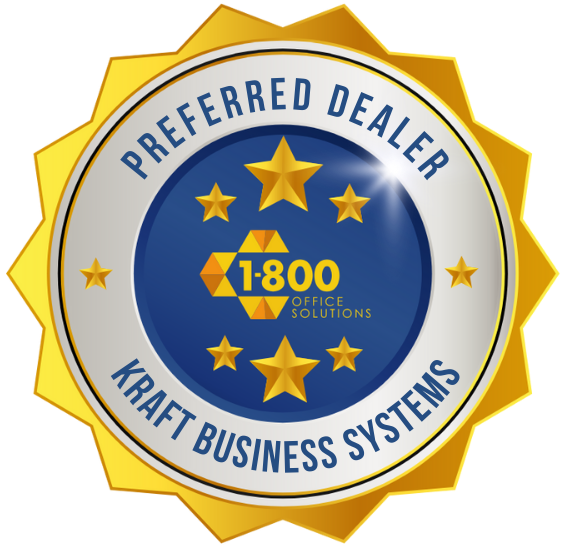The governance risk and compliance platform market is experiencing rapid growth as organizations face increasing regulatory pressures and cybersecurity threats. If you’re researching this market, here’s what you need to know:
GRC Platform Market at a Glance:
- Current Market Size: Valued at approximately $49.2 Billion in 2024
- Projected Growth: Expected to reach $127.7 Billion by 2033
- CAGR: Growing at 11.18% annually
- Key Drivers: Regulatory complexity, cybersecurity concerns, cloud adoption
- Leading Regions: North America dominates, with rapid growth in APAC
The digital change wave has thrust governance, risk, and compliance platforms into the spotlight. As businesses steer increasingly complex regulatory environments while facing sophisticated cyber threats, GRC platforms have evolved from nice-to-have tools to essential business infrastructure.
For mid-sized businesses, particularly those with limited IT resources, understanding this market is crucial. The right GRC platform can transform how you manage compliance requirements, mitigate risks, and strengthen governance – all while reducing operational costs and preventing potentially devastating compliance failures.
What’s driving this remarkable growth? Regulatory frameworks continue to multiply and become more complex, with requirements like GDPR, PCI DSS, and industry-specific regulations creating compliance headaches for businesses across sectors. Meanwhile, cybersecurity concerns have liftd risk management to a board-level priority, with GRC platforms increasingly serving as the central nervous system for organizational security postures.
The technology powering these platforms is evolving too. Traditional checkbox-style compliance tools are giving way to sophisticated platforms leveraging AI, machine learning, and cloud capabilities to deliver real-time risk intelligence and automated compliance monitoring.
Governance risk and compliance platform market terms explained:
- enterprise grc solution
- governance risk and compliance platforms
- grc governance risk and compliance tools
The Current State of the Governance Risk and Compliance Platform Market
The governance risk and compliance platform market has transformed dramatically in recent years. Companies of all sizes now recognize that solid GRC frameworks aren’t just nice to have – they’re essential for navigating regulatory challenges, managing risks, and keeping operations running smoothly.
Remember when GRC meant a hodgepodge of disconnected tools? Those days are gone. The market has matured into a robust ecosystem of comprehensive platforms that handle everything from policy management to risk assessment. This shift makes perfect sense – after all, today’s business risks don’t exist in isolation, so why should your solutions?
| Market Metric | 2024 | 2031 (Projected) | Growth Factor |
|---|---|---|---|
| Market Size | $49.2B | $114.3B | 2.32x |
| Number of Vendors | 200+ | 275+ (est.) | 1.38x |
| Average Implementation Cost | $250K-$1.5M | $200K-$1.2M | Decreasing |
| Cloud Deployment Share | 62% | 85% | 1.37x |
| AI-Enabled Solutions | 38% | 92% | 2.42x |
Global Market Size and Growth Projections
The governance risk and compliance platform market currently sits at a hefty USD 49.2 Billion in 2024. But hold onto your hats – experts project this figure will soar to USD 127.7 Billion by 2033, growing at an impressive 11.18% annually.
What’s fueling this remarkable growth? For starters, regulators across industries are tightening the screws. Meanwhile, companies are realizing that solid risk management isn’t just about avoiding trouble – it’s a strategic advantage. Add in the increasing complexity of compliance requirements, rapid digital change, and the ever-present specter of cyber threats, and you have a perfect storm for market expansion.
As industry analyst Jane Forrester puts it, “The GRC platform market is entering a golden age of innovation. Organizations are moving beyond viewing GRC as a necessary evil and instead recognizing it as a source of competitive advantage and business resilience.”
For Michigan businesses and others across the Midwest, this growth brings both challenges and opportunities. Yes, keeping up with GRC requirements can strain your resources. But the right platform can dramatically streamline these processes, delivering real operational benefits and peace of mind.
Key Market Segments in the Governance Risk and Compliance Platform Market
The governance risk and compliance platform market isn’t one-size-fits-all. It’s highly segmented to meet the diverse needs of organizations across different industries, sizes, and regulatory environments.
When it comes to deployment models, cloud-based platforms are rapidly gaining ground, while traditional on-premises solutions continue to lose market share. Hybrid deployments offer a middle ground that many companies find appealing – keeping sensitive data local while leveraging cloud capabilities for other functions.
The market offers various solution types to address specific needs. These include audit management for tracking and documenting audit processes, policy management for creating and distributing policies, compliance management for staying on top of regulatory requirements, risk management for identifying and mitigating risks, incident management for responding to issues when they arise, and third-party risk management for keeping an eye on your vendors and partners.
Looking at market components, we see a mix of software and services, with the latter including implementation support, consulting, and ongoing technical assistance. Many providers also offer training and education to help teams make the most of their GRC investments.
From a geographic perspective, North America continues to hold the largest market share, thanks in part to its complex regulatory environment. Europe follows closely behind, while the Asia-Pacific region is growing fastest as businesses there accept GRC practices.
Here at Kraft Business Systems, we’ve noticed that mid-sized Michigan organizations increasingly prefer cloud-based GRC solutions. These platforms offer the flexibility and scalability businesses need without requiring huge upfront investments in infrastructure – perfect for companies looking to maximize their technology dollars while strengthening their compliance posture.
Drivers Fueling Growth in the GRC Platform Market
The governance risk and compliance platform market is experiencing remarkable growth, transformed from a behind-the-scenes function into a crucial strategic priority for businesses of all sizes. Several powerful forces are combining to drive this expansion, creating both challenges and opportunities for organizations.
Regulatory demands have become increasingly complex, while cybersecurity threats continue to evolve at an alarming pace. At the same time, digital change initiatives are reshaping how businesses operate. This perfect storm has made robust GRC platforms essential rather than optional for forward-thinking companies.
For many of our Michigan clients, the growing focus on third-party risk has been particularly noteworthy. As supply chains become more interconnected, the risks posed by vendors and partners have multiplied. We’ve seen how a single vulnerable link in the supply chain can create significant exposure for otherwise well-protected organizations.
Interestingly, board-level executives are now paying much closer attention to risk management. What was once delegated to compliance departments is now appearing regularly on boardroom agendas, reflecting the strategic importance of getting GRC right.
The shift to remote and hybrid work models has created entirely new compliance challenges that many organizations weren’t prepared to handle. Meanwhile, growing ESG requirements are adding yet another layer of complexity to the compliance landscape.
Impact of Regulatory Complexities
The maze of regulations facing businesses today can feel overwhelming without the right tools. Many of our clients describe feeling trapped in a constantly shifting regulatory labyrinth, where compliance with one standard might put them at odds with another.
Proliferating frameworks have created a compliance headache for businesses across sectors. From GDPR in Europe to CCPA/CPRA in California, HIPAA in healthcare, and the changing PCI DSS standards for payment processors, keeping track of requirements has become a full-time job – or several jobs – for many organizations.
The challenge grows exponentially for companies operating across multiple jurisdictions. A Grand Rapids manufacturer recently told us, “We expanded into three new states last year, and each one had different requirements for data handling, employment practices, and environmental compliance. Without our GRC platform, we would have needed to hire a compliance specialist for each location.”
The stakes have never been higher, with regulatory penalties reaching record levels. Gone are the days when non-compliance resulted in a slap on the wrist. Today’s enforcement actions can threaten a company’s very existence, with fines sometimes reaching hundreds of millions of dollars.
Perhaps most challenging is the constantly evolving nature of regulations. What’s compliant today might not be tomorrow, requiring businesses to stay vigilant and adaptable. A good example is the recent PCI DSS 4.0 update, which introduced over 300 changes from the previous version. For businesses processing payment cards, these changes represent significant new compliance problems.
The Role of Cybersecurity in GRC Platform Adoption
Cybersecurity and GRC have become inseparable in the modern business environment. This connection represents one of the most significant trends in the governance risk and compliance platform market, as organizations recognize that security failures often lead to compliance failures – and vice versa.
The financial implications are staggering. With the average data breach now costing $4.45 million (as of 2023), organizations can’t afford to treat cybersecurity as separate from their broader risk management strategy. For small and mid-sized businesses in Michigan, even a fraction of this cost could be devastating.
Many regulations now explicitly mandate specific security controls, blurring the traditional lines between compliance and security functions. We’ve helped numerous clients in West Michigan implement integrated approaches that address both concerns simultaneously, saving time and resources while improving outcomes.
The rise of third-party security incidents has been particularly concerning. One local client finded that a vendor with access to their systems had experienced a ransomware attack, potentially exposing customer data. Their GRC platform flagged the vendor’s security certification as expired, but this warning had been overlooked in their manual review process.
Even cyber insurance providers have recognized this connection. Many insurers now require documented GRC processes as a condition for coverage, understanding that good governance and compliance practices typically correlate with stronger security postures.
For manufacturing clients across Michigan, this integration has taken on new urgency. As factories become more connected and digitized, the attack surface has expanded dramatically. One automotive supplier told us, “We used to worry about physical security for our intellectual property. Now we’re connecting our production equipment to the internet and creating all kinds of new risks we never had to think about before.”
At Kraft Business Systems, we’ve helped numerous Grand Rapids businesses steer these complex intersections of compliance, security, and risk management. The right GRC platform doesn’t just help you check regulatory boxes – it builds resilience throughout your organization.
Technological Advancements Shaping the GRC Market
The governance risk and compliance platform market is undergoing an exciting technological revolution. Gone are the days of static spreadsheets and basic checklist tools. Modern GRC platforms now harness cutting-edge technologies that transform how businesses handle risk and compliance.
These innovations aren’t just impressive on paper—they’re changing how Michigan businesses protect themselves while saving time and resources.
AI and Machine Learning in GRC Platforms
Artificial intelligence and machine learning are fundamentally changing what GRC platforms can do. These technologies bring intelligence and automation to what was once a manual, error-prone process.
Real-Time Risk Assessment
Traditional risk assessments happened quarterly or annually, leaving dangerous gaps between reviews. AI-powered platforms now continuously monitor your systems, scanning for risks as they emerge.
One of our healthcare clients in Ann Arbor experienced this benefit firsthand. Their AI-driven GRC platform flagged unusual access patterns in patient records, revealing an employee inappropriately viewing celebrity medical files. The system caught this HIPAA violation immediately—something that might have gone undetected for months with traditional monitoring.
“The system spotted a needle in a haystack that we would never have found manually,” the compliance officer told us. “It likely saved us from a serious breach notification and potential fines.”
Predictive Analytics
The most exciting advancement might be the shift from reactive to predictive compliance. Modern GRC platforms don’t just tell you what went wrong—they help forecast what might go wrong next.
By analyzing historical patterns, regulatory trends, and your organization’s unique data, these systems can highlight emerging risks before they become problems. For Michigan manufacturers facing complex regulatory environments, this predictive capability provides invaluable lead time to address issues before they trigger compliance violations.
Automation of Compliance Tasks
Perhaps the most welcome development for overworked compliance teams is automation. AI and machine learning now handle many tedious compliance tasks that once required countless human hours.
Systems now automatically collect evidence for audits, interpret complex regulatory text, map policies to requirements, route tasks to the right people, and even test and validate controls. For smaller businesses in Flint and Detroit, this automation means maintaining robust compliance without needing large specialized teams.
A manufacturing client in Lansing told us: “What used to take three people two weeks now happens automatically in the background. We’re compliant without the compliance headache.”
Cloud-Based GRC Solutions
The shift from on-premises systems to cloud-based GRC platforms represents another fundamental change in the governance risk and compliance platform market. Cloud solutions now dominate new implementations, offering compelling advantages for Michigan businesses.
Scalability and Flexibility
Cloud GRC platforms grow with your business without requiring major new investments. Whether you’re adding locations, facing new regulations, or simply processing more data, cloud solutions scale smoothly to meet your needs. This scalability is particularly valuable for growing businesses in Michigan’s technology corridors around Ann Arbor and Grand Rapids.
Rapid Deployment and Updates
Remember when implementing new software meant months of painful installation and configuration? Cloud GRC platforms deploy in a fraction of the time. Even better, vendors handle updates automatically, ensuring you always have the latest features and regulatory content without IT headaches.
Improved Collaboration
Cloud platforms make collaboration natural and easy. Teams across different departments, locations, and even external partners like auditors can work together seamlessly. For Michigan businesses with multiple locations, this connectivity eliminates the compliance silos that often lead to gaps and redundancies.
Cost Advantages
The financial model for cloud GRC solutions often makes more sense for mid-sized businesses. Instead of large upfront capital expenditures, you get predictable subscription pricing that’s easier to budget. Many of our clients find their total cost of ownership is significantly lower with cloud solutions.
Improved Security
Early concerns about cloud security have given way to recognition that leading cloud providers offer security capabilities beyond what most organizations could implement themselves. With advanced encryption, continuous monitoring, and comprehensive access controls, cloud GRC platforms often improve rather than compromise security.
A manufacturing client in Sterling Heights recently told us after migrating to a cloud GRC platform: “We were hesitant about moving our compliance data to the cloud, but now I sleep better at night. The security is better, and we can access our compliance information from anywhere—which was a lifesaver during the pandemic.”
At Kraft Business Systems, we’ve helped dozens of Michigan organizations steer these technological advances in the GRC space. The right technology choices can transform compliance from a burden into a business advantage—reducing costs while improving risk protection.
Challenges and Restraints in the GRC Platform Market
While the governance risk and compliance platform market continues its impressive growth trajectory, several significant problems can make implementation challenging. Understanding these obstacles is essential for any organization considering a GRC investment.
High Implementation Expenses
Let’s be honest – implementing a robust GRC platform isn’t cheap. For many Michigan businesses, especially small and mid-sized companies, the price tag can cause serious sticker shock.
“We nearly fell out of our chairs when we saw the initial quote,” shared the IT director of a manufacturing firm in Lansing. “The cost was almost triple what we had set aside in our technology budget.”
These expenses go well beyond just purchasing the software. You’re looking at implementation consulting, system integration work, data migration, user training, change management, and ongoing support costs. All these elements add up quickly, creating a significant financial burden for companies with limited IT resources.
What makes justifying these costs even trickier is the ROI challenge. Unlike sales software that directly drives revenue, GRC platforms often deliver value through problems you avoid – the regulatory fine that never happened, the data breach that was prevented, or the reputational damage that never occurred. These “non-events” are notoriously difficult to quantify on a balance sheet.
At Kraft Business Systems, we’ve helped numerous Michigan clients overcome these financial problems. For a healthcare provider in Grand Rapids, we implemented a phased approach that spread costs across three fiscal years. We started with the most critical compliance modules before gradually expanding capabilities. This approach made the project financially digestible while still delivering immediate value.
Another effective strategy is focusing on measurable efficiency gains. When we helped a financial services firm in Traverse City implement their GRC platform, we tracked the hours saved on compliance reporting. The 62% reduction in manual effort provided a concrete ROI figure that made the investment easier to justify to leadership.
Integration Complexity
Perhaps even more challenging than the cost is the technical complexity of connecting GRC platforms with your existing technology ecosystem. This integration challenge can quickly turn into a technical nightmare if not properly managed.
System integration issues are particularly thorny because effective GRC platforms need to communicate with so many different systems. Your GRC solution might need to pull data from your ERP system, HR platform, IT service management tools, identity management solution, and security monitoring systems – just to name a few.
Each of these connection points represents a potential technical headache. We recently worked with a healthcare provider in Detroit whose clinical systems were nearly two decades old with minimal integration capabilities. “We ended up having to build custom connectors for each system,” their CIO explained, “which doubled our implementation timeline and added significant cost.”
Legacy systems create particularly stubborn integration problems. Many older platforms weren’t designed with modern API capabilities, forcing organizations to create complex workarounds or middleware solutions. This challenge is especially common in manufacturing and healthcare organizations across Michigan, where specialized legacy systems often remain operational for decades.
Even when you solve the technical integration puzzle, data silos and quality issues can undermine your GRC effectiveness. A GRC platform is only as good as the data feeding into it. If that information is inconsistent, incomplete, or scattered across organizational silos, your GRC platform won’t deliver the insights you need.
“Garbage in, garbage out really applies to GRC platforms,” notes one of our systems architects at Kraft Business. “We always recommend clients undergo a data quality assessment before implementation begins.”
Smart organizations are addressing these integration challenges proactively. They’re prioritizing integration capabilities during the platform selection process, investing in data quality initiatives before implementation, developing clear data governance frameworks, and considering middleware solutions to bridge system gaps.
For a manufacturing client in Sterling Heights, we created a comprehensive integration roadmap before selecting their GRC platform. This approach helped them identify potential integration challenges early and choose a platform specifically designed to work with their existing technology stack.
While these challenges are real, they’re not impossible. With proper planning and expert guidance, organizations can steer the complexities of GRC implementation successfully. At Kraft Business Systems, we’ve helped clients across Michigan overcome these problems to build effective, integrated GRC capabilities that truly deliver value.
Market Segmentation and Regional Trends
The governance risk and compliance platform market breaks down into distinct segments that tell an interesting story about how different organizations approach their GRC needs. Understanding these patterns helps businesses make smarter technology choices that align with their specific requirements.
Deployment Models and Solutions
When we look at how companies deploy their GRC solutions, we’re seeing a clear shift in preferences that mirrors broader technology trends.
On-premises solutions still maintain about 35% of the market, primarily serving highly regulated industries like healthcare and financial services where data sovereignty concerns remain paramount. Many of our Michigan banking clients, for instance, still prefer keeping certain compliance data within their own walls.
Cloud-based solutions have become the dominant force, capturing roughly 62% of new implementations. The appeal is obvious – faster deployment, reduced IT burden, and easier updates. As one of our clients in Kalamazoo put it, “We were up and running in weeks instead of months, and our IT team can focus on strategic initiatives instead of maintaining another system.”
Hybrid deployments are gaining traction as a “best of both worlds” approach. Organizations can keep sensitive data on-premises while leveraging cloud capabilities for other aspects of their GRC program.
Beyond deployment models, the market divides into several solution types, each addressing specific GRC needs:
Integrated GRC Platforms have become the fastest-growing segment by bringing together various GRC functions into a cohesive whole. These comprehensive solutions help break down silos between governance, risk, and compliance activities.
Risk Management Solutions focus specifically on identifying, assessing, and mitigating various types of organizational risks, from operational to strategic.
Compliance Management Solutions help organizations track regulatory requirements and demonstrate adherence to them – particularly valuable in heavily regulated industries.
Audit Management Solutions streamline the planning, execution, and reporting of internal and external audits, reducing the time and stress associated with audit cycles.
Policy Management Solutions provide structured systems for creating, approving, distributing, and tracking organizational policies.
Third-Party Risk Management Solutions have seen growing demand as supply chains become more complex, helping assess and monitor vendor and partner risks.
The market also segments by component type, with software representing the largest revenue segment, followed by professional services (implementation and customization), managed services (ongoing support), and training programs.
For our clients in Michigan, these distinctions matter. A manufacturing client in Warren recently switched from separate risk and compliance tools to an integrated GRC platform. The result? Lower total costs and dramatically improved collaboration between their risk, compliance, and audit teams.
Regional Dominance in the Governance Risk and Compliance Platform Market
Geographic location significantly influences GRC platform adoption, with distinct regional patterns emerging across the global market.
North America leads the pack, accounting for about 42% of worldwide GRC spending. This dominance stems from several factors: a complex regulatory environment, heightened awareness of cybersecurity risks, strong technology adoption culture, and the presence of major GRC vendors. Within Michigan specifically, we’ve observed particularly robust adoption in automotive, healthcare, and financial services – industries facing intense regulatory scrutiny and complex supply chain demands.
A senior IT director at a Grand Rapids healthcare system recently told us, “Compliance isn’t optional in our world – it’s existential. Our GRC platform has become as essential as our clinical systems.”
Europe holds the second-largest market share at approximately 28%, with adoption heavily influenced by the region’s stringent regulatory frameworks. The General Data Protection Regulation (GDPR) has been a particular catalyst, pushing organizations to implement more sophisticated compliance management tools. European organizations also tend to place greater emphasis on ESG (Environmental, Social, Governance) reporting capabilities within their GRC platforms.
Asia-Pacific represents the most dynamic region, with projected growth rates exceeding 14% through 2033. This surge is fueled by rapidly maturing regulatory environments, increasing cybersecurity concerns, and aggressive digital change initiatives across the region. Many multinational corporations are implementing GRC platforms to manage compliance with both local and global standards.
For Michigan businesses with global operations or supply chains, these regional variations create both challenges and opportunities. A manufacturer based in Grand Rapids recently implemented separate GRC instances for their US and EU operations, recognizing that a one-size-fits-all approach wouldn’t address the distinct regulatory requirements in each region.
At Kraft Business Systems, we help clients steer these regional complexities, ensuring their GRC platforms can adapt to varying compliance requirements while maintaining a consistent approach to risk management.
Emerging Trends and Opportunities in the GRC Platform Market
The governance risk and compliance platform market is experiencing fascinating evolution as new technologies and business priorities reshape how organizations approach risk management. These emerging trends aren’t just interesting developments—they represent genuine opportunities for forward-thinking companies to gain competitive advantage.
Shift Toward Integrated GRC Platforms
Remember when every department had its own way of handling risk and compliance? Those days are rapidly disappearing as businesses recognize the power of unified approaches.
Breaking Down Silos
The traditional approach to GRC resembled a house where every room operated independently—compliance teams in one corner, risk managers in another, and governance folks somewhere else entirely. This fragmentation created headaches that many Michigan businesses know all too well.
A healthcare provider in Grand Rapids recently told us, “We were drowning in spreadsheets and duplicate work. Our compliance team would gather information that our risk team had already collected last month. Meanwhile, leadership couldn’t get a clear picture of our overall risk posture.”
This siloed approach leads to inconsistent risk assessments, wasted resources, and blind spots where interconnected risks go unnoticed. Most frustratingly, it makes it nearly impossible to provide leadership with the comprehensive insights they need for strategic decision-making.
Unified Solutions
Modern integrated GRC platforms solve these problems by creating a single source of truth. They establish a common risk language across the organization, consolidate views of risks and controls, and map those controls to multiple compliance frameworks simultaneously.
For small and mid-sized businesses across Michigan, these unified platforms offer particular value. Rather than needing separate specialists for each regulatory framework, a smaller team can effectively manage multiple compliance requirements through a single interface. A manufacturing client in Flint recently consolidated five separate compliance tools into one platform, freeing up team members to focus on more strategic initiatives.
Increased Efficiency
The numbers tell a compelling story about integrated GRC platforms. Organizations typically see 40-60% reductions in compliance documentation time, 30-50% decreases in audit preparation, and 25-35% lower overall GRC-related costs.
Beyond these hard savings, businesses report significant improvements in risk visibility. “We used to find risks after they became problems,” explained a retail chain CIO in Detroit. “Now we spot potential issues weeks or months in advance, giving us time to address them before they impact our business.”
Growing Importance of Third-Party Risk Management
The modern business isn’t an island—it’s more like a complex ecosystem of partners, vendors, and service providers. This interconnectedness creates opportunities but also introduces significant risks that smart organizations are learning to manage.
Extended Enterprise Risks
The risks from third-party relationships have never been more evident than in recent years. From data breaches originating with vendors to supply chain disruptions that paralyzed production, Michigan businesses have experienced how third-party problems can quickly become their problems.
For automotive suppliers around Detroit and manufacturing companies throughout the state, these risks are particularly acute. When your business depends on dozens or hundreds of suppliers operating smoothly, a problem with even one link in that chain can bring operations to a halt.
Vendor Assessments
Modern GRC platforms have evolved to address these challenges with sophisticated vendor assessment capabilities. Rather than annual questionnaires that quickly become outdated, leading platforms now offer continuous monitoring that tracks vendor risk indicators in real-time.
A food processing company in Kalamazoo recently implemented such a system and finded concerning financial stability issues with a key ingredient supplier months before they would have been revealed in standard annual reviews. This early warning allowed them to qualify alternative suppliers before any disruption occurred.
The best platforms also integrate external risk intelligence sources, automatically alerting you when new vulnerabilities, sanctions, or regulatory issues affect your vendor ecosystem. This continuous monitoring turns vendor risk management from a periodic checkbox exercise into an ongoing risk mitigation program.
Supply Chain Security
Supply chain security has become particularly crucial for Michigan’s manufacturing sector. With increasing concerns about counterfeit components, software vulnerabilities, and even nation-state threats to supply chains, companies need robust tools to manage these risks.
Advanced GRC platforms now offer specialized capabilities for tracking software bills of materials (SBOMs), monitoring component vulnerabilities, and verifying chain of custody. For defense contractors and automotive manufacturers dealing with sensitive technologies, these capabilities aren’t just nice-to-have features—they’re essential protections.
At Kraft Business Systems, we’ve seen Michigan companies of all sizes benefit from these emerging GRC capabilities. Whether you’re just starting your GRC journey or looking to improve your existing program, understanding these trends can help you make smarter technology decisions that protect your business while supporting growth.
Frequently Asked Questions about the Governance Risk and Compliance Platform Market
What is the projected growth rate of the GRC platform market?
The governance risk and compliance platform market is on an impressive growth trajectory, expected to climb at a steady 11.18% compound annual growth rate from 2024 to 2033. In practical terms, this means the market will expand from today’s $49.2 billion valuation to a substantial $127.7 billion by 2033.
This remarkable growth isn’t happening by accident. Businesses are facing increasingly complex regulatory environments that seem to change almost daily. Cybersecurity concerns keep leadership teams up at night, while data privacy requirements continue to multiply. Many organizations are also wrestling with the challenges of managing risks across sprawling networks of vendors and partners.
Digital change initiatives are creating entirely new compliance challenges that didn’t exist even five years ago. Meanwhile, companies are moving away from piecemeal approaches toward more integrated GRC strategies. Behind all this, technological innovations are making these platforms more powerful and user-friendly than ever before.
For Michigan businesses – whether you’re a manufacturer in Detroit, a healthcare provider in Grand Rapids, or a financial services firm in Ann Arbor – this growth means good news. GRC platforms that were once exclusively for enterprise-level organizations are becoming increasingly accessible to mid-sized businesses that previously couldn’t justify the investment.
How are AI and machine learning impacting GRC solutions?
Artificial intelligence and machine learning are completely changing the governance risk and compliance platform market in ways that make these tools dramatically more valuable to organizations.
Gone are the days of manual quarterly compliance reviews. Today’s AI-powered platforms constantly monitor your systems, analyzing vast datasets to spot compliance issues in real-time. For a healthcare provider dealing with HIPAA requirements or a manufacturer navigating complex safety regulations, this continuous monitoring capability is a game-changer.
Perhaps even more valuable is the shift toward predictive risk analytics. Modern GRC platforms don’t just tell you what went wrong yesterday – they help you see what might go wrong tomorrow. We recently worked with a financial services client in Ann Arbor who implemented an AI-driven platform that identified potential fraud patterns before they materialized into actual losses. They were able to strengthen controls proactively rather than cleaning up a mess after the fact.
Natural language processing capabilities are another breakthrough, helping organizations make sense of complex regulatory documents. These systems can automatically analyze new regulations, identify the requirements that apply to your organization, and map them to your existing controls. What once took weeks of expert analysis can now happen almost instantaneously.
The automation potential is equally impressive. AI systems now automatically gather compliance evidence, intelligently route tasks to the right people, test controls without human intervention, and classify incidents based on sophisticated analysis. For smaller Michigan businesses with limited compliance resources, these capabilities essentially provide an AI-powered compliance team that works around the clock.
Which regions are expected to dominate the GRC platform market?
North America currently leads the governance risk and compliance platform market, commanding about 42% of global market share. Europe follows at 28%, with Asia-Pacific holding 22%. However, these figures only tell part of the story – the regional growth patterns reveal important trends for forward-thinking organizations.
The North American market benefits from several advantages, including a mature regulatory environment where organizations have long recognized the value of systematic compliance approaches. Cybersecurity awareness is generally high, and the region has always been quick to adopt new technologies. It doesn’t hurt that many leading GRC platform vendors are headquartered here.
In Michigan specifically, we’re seeing particularly strong adoption among manufacturing companies dealing with complex automotive supply chains and healthcare organizations navigating patient privacy requirements. Many of these organizations initially implemented GRC platforms to meet specific compliance needs but quickly finded broader risk management benefits.
The European market marches to the beat of its own regulatory drum, with GDPR remaining a powerful driver of GRC adoption. Other frameworks like the NIS2 Directive, MiFID II financial regulations, and emerging ESG reporting requirements create a complex compliance picture that virtually demands technological assistance.
While smaller today, the Asia-Pacific region is where the real growth story is unfolding. With a projected CAGR exceeding 14% through 2033, this region is outpacing all others. This growth stems from rapidly evolving regulatory environments, accelerating digital change initiatives, growing cybersecurity concerns, and increasing integration with global business operations.
For Michigan businesses with international operations or supply chains, these regional variations have practical implications for GRC strategy. A platform that works beautifully for U.S. operations might need significant adaptation to address European privacy requirements or Asian regulatory frameworks.
Conclusion
The governance risk and compliance platform market is changing how businesses handle their most pressing operational challenges. What we’re seeing isn’t just growth—it’s a fundamental shift in how organizations view GRC from a necessary burden to a strategic advantage.
With the market set to expand from $49.2 billion in 2024 to a remarkable $127.7 billion by 2033, it’s clear that businesses are recognizing the critical importance of robust GRC frameworks. This isn’t just about checking boxes anymore—it’s about building organizational resilience.
For businesses across Michigan, from manufacturing plants to healthcare facilities, several key insights stand out:
Integration creates clarity. The days of managing governance, risk, and compliance in separate silos are ending. Modern platforms bring these functions together, giving leadership teams a comprehensive view of their risk landscape and compliance status. This unified approach eliminates duplicate efforts and reveals connections between risks that might otherwise go unnoticed.
Technology is changing what’s possible. AI and machine learning aren’t just buzzwords in the GRC space—they’re delivering real value by automating routine tasks, predicting emerging risks, and providing deeper insights than ever before. Cloud-based solutions are making sophisticated GRC capabilities accessible even to mid-sized organizations with limited IT resources.
Third-party relationships require special attention. Your business is only as secure as your weakest vendor link. Modern GRC platforms recognize this reality, offering robust tools to assess and monitor the risks posed by suppliers, service providers, and other partners. For Michigan manufacturers embedded in complex supply chains, these capabilities are particularly valuable.
Regional differences matter. Organizations with operations spanning multiple regions need GRC solutions that can adapt to varying regulatory requirements. What works for your Grand Rapids headquarters might not suffice for your European or Asian operations.
Implementation challenges remain real. Despite technological advances, implementing a GRC platform still requires careful planning. Integration with existing systems, data quality issues, and organizational change management all need thoughtful attention to ensure success.
At Kraft Business Systems, we’ve guided numerous Michigan organizations through these challenges. Our team understands both the technical aspects of GRC implementation and the human side of change management. We can help you steer platform selection, implementation, and optimization to ensure you achieve maximum value while effectively managing your governance, risk, and compliance requirements.
The path to mature GRC capabilities may have its challenges, but the rewards are substantial. Beyond just avoiding regulatory penalties, effective GRC delivers reduced operational costs, improved decision-making, and greater organizational resilience. For businesses throughout Michigan—whether you’re an automotive supplier in Detroit, a healthcare provider in Grand Rapids, or a tech company in Ann Arbor—modern GRC capabilities provide not just compliance peace of mind but genuine competitive advantage.
More info about Managed Cybersecurity Services

